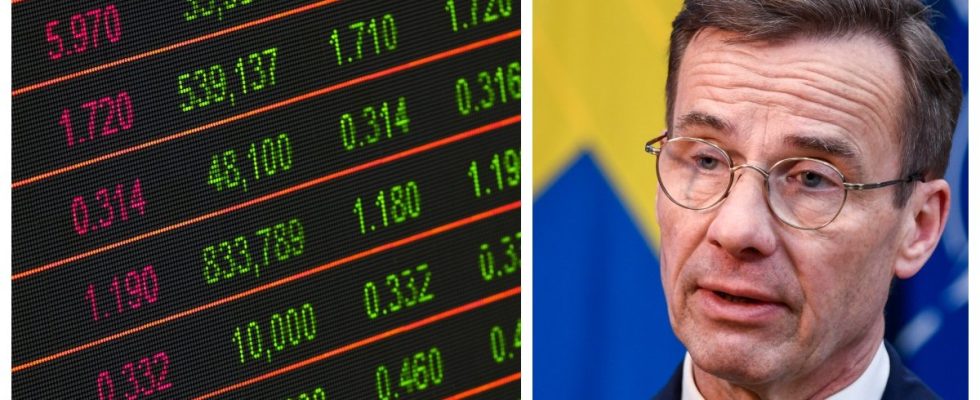Sweden after the pandemic had all the conditions to become an economic locomotive. Unlike many neighboring countries, Sweden did not shut down society and schools.
In 2020, GDP in Europe shrank by 5.6 percent, but in Sweden it only shrank by 2.2 percent.
The rise in 2021 was even more powerful for Sweden: 6.1 percent.
But by 2022, growth had fallen to a modest 2.8 percent.
And last year GDP shrank. Sweden ended up in the worst possible place in the growth league in Europe.
At the same time, inflation accelerated by 10.8 percent in 2022, warns the IMF. And in 2023 it was noticeably higher than other countries’ inflation.
DO NOT MISS: 90,000 Avanza customers swindled huge sums – have you been affected?
Meager growth for Sweden in 2024
This year, Sweden’s economy can grow by between 0.1 and 1 percent according to the assessors. The IMF suspects 0.2 percent growth.
The meager figure is little consolation for those whose average household income has become SEK 100,000 more expensive – or more. In addition, inflation is still rising by 2.6 percent, which misses the Riksbank’s target.
In a year’s time, that is, only in 2025, the IMF believes that the price increases will end up in line with the Riksbank’s target of 2.0 percent.
The culprit in the drama
The culprit in the drama is expensive credit, according to the scathing report.
“After a mild recession in 2023, growth is expected to remain subdued in 2024, averaging 0.2 percent,” writes the IMF.
Both homes and businesses are having a tough time:
“Systematic risks remain high through tight financial conditions, sluggish economic activity, weaknesses in the residential real estate (RRE) and commercial real estate (CRE) markets, and high financial sector exposure to both,” according to the IMF’s report.
IMF: Risks overshadow growth
The risks unfortunately outweigh the growth in our elongated country, states the International Monetary Fund.
“The main risk arises from unexpectedly high impacts from tight financial conditions associated with short-term and variable lending,” the IMF continues.
And in pure Swedish?
In pure Swedish, this means that both households and companies borrowed significantly more than is healthy in the years before the crisis – and between the lines, one can assume that the key interest rate should therefore have been raised earlier in order not to encourage such high borrowing.
It is further problematic that Swedish households have such variable interest rates for their mortgages.
Fragile Swedish households
This means that expenses quickly increase for the private borrowers. Another way to describe it is that the Swedes are incredibly sensitive to interest rates. That makes our economy a dodgy card for international investment.
And it is not just households that have lived on borrowed money.
Steel bath for the real estate industry
Commercial real estate has suffered a steel bath in the last year and several companies have either gone under, been forced to sell billion-dollar properties for laughably small sums to avoid bankruptcy, abandoned the real estate market completely or trolled on their knees to find capital.
Oscar Properties avoids bankruptcy
Read more about the IMF, Sweden and the economy:
IMF: The war has crashed the Palestinian economy
90,000 Avanza customers swindled huge sums – have you been affected?
Anna Wikland wanted to be a veterinarian – now she is a top manager at Google
The fiddlers’ enemy hunts the municipality’s missing billions – with AI
